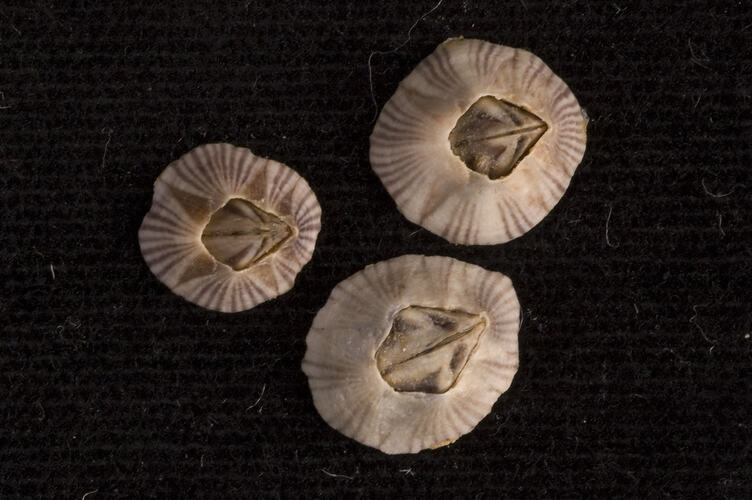General Description
Six smooth side plates around the body with a diamond shape opening. White or with pink-brown stripes radiating from the opening to the edge. Plates in the opening (scuta) have growth lines. Up to 1 cm high, 2 cm wide.
Biology
Striped Barnacles are a common fouling species, attaching to rocks, pier piles, shells, crabs and ships.
Distribution
Worldwide. Southern Australia.
Habitat
Estuaries and sheltered bays, near low tide level, to depth of 9 m.
More Information
-
Animal Type
-
Animal SubType
-
Brief Id
Six plates, brown stripes, scuta with growth lines.
-
Colours
White, Pink, Brown
-
Habitats
-
Diet
Plankton or Particles
-
Endemicity
-
Commercial
No
-
Conservation Statuses
CITES: Not listed, FFG Threatened List: Not listed, EPBC Act 1999: Not listed, IUCN Red List: Not listed
-
Depths
Shore (0-1 m), Shallow (1-30 m)
-
Water Column Locations
On or near seafloor
-
Taxon Name
-
Scientific Author
(Darwin, 1854)
-
Common Name
Striped Barnacle
-
Phylum
-
Subphylum
-
Class
-
Subclass
-
Superorder
-
Order
-
Suborder
-
Superfamily
-
Family
-
Genus
-
Species Name
amphitrite

